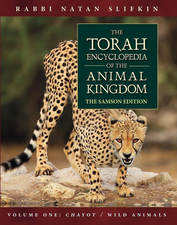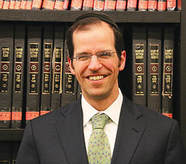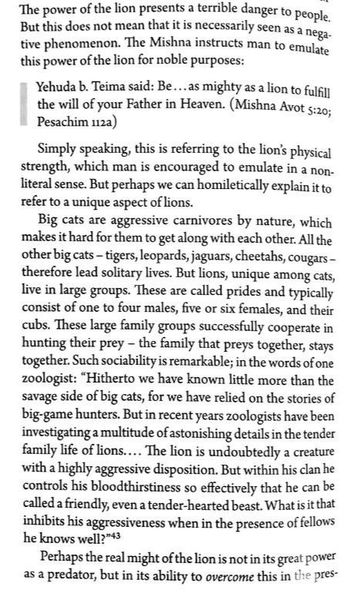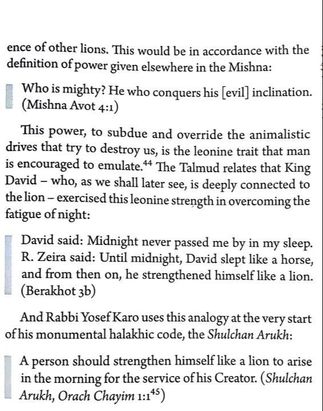|
Photo by Egor Kamelev from Pexels
PodcastsTexts
HighlightsTwo Worlds, Two Dimensions (Perek 26)
Yeshayahu describes trusting in Hashem in a beautiful poetic line (Yeshayahu 26:4)
בִּטְחוּ בַה׳, עֲדֵי-עַד: כִּי בְּיָהּ ה׳, צוּר עוֹלָמִים
Trust ye in the LORD for ever, for the LORD is GOD, an everlasting Rock.
The Gemara in Menachos 29b teaches us that there is much more being described than simply trusting in Hashem. Yeshayahu is actually describing the difference between the dimension of this world and the next.
כדבעא מיניה רבי יהודה נשיאה מר' אמי מאי דכתיב (ישעיהו כו, ד) בטחו ביי' עדי עד כי ביה יי' צור עולמים אמר ליה כל התולה בטחונו בהקב"ה הרי לו מחסה בעולם הזה ולעולם הבא אמר ליה אנא הכי קא קשיא לי מאי שנא דכתיב ביה ולא כתיב יה כדדרש ר' יהודה בר ר' אילעאי אלו שני עולמות שברא הקב"ה אחד בה"י ואחד ביו"ד ואיני יודע אם העולם הבא ביו"ד והעולם הזה בה"י אם העולם הזה ביו"ד והעולם הבא בה"י
Rabbi Yehuda Nesia asked Rabbi Ami: What is the meaning of that which is written: “Trust in the Lord forever, for in the Lord [beYah] is God, an everlasting [olamim] Rock” (Isaiah 26:4)? Rabbi Ami said to him: Anyone who puts their trust in the Holy One, Blessed be He, will have Him as his refuge in this world and in the World-to-Come. This is alluded to in the word “olamim,” which can also mean: Worlds.
Rabbi Yehuda Nesia said toRabbi Ami: I was not asking about the literal meaning of the verse; this is what poses a difficulty for me: What is different about that which is written: “Forin the Lord [beYah],” and it is not written: For the Lord [Yah]? Rav Ashi responded: It is as Rabbi Yehuda bar Rabbi Elai taught: The verse “For in the Lord [beYah] is God, an everlasting Rock [Tzur olamim]” is understood as follows: The term “Tzur olamim” can also mean Creator of worlds. Theseletters yod and heh that constitute the word yah are referring to the two worlds that the Holy One, Blessed be He, created; one with [be] the letter heh and one with [be] the letter yod. And I do not know whether the World-to-Come was created with the letter yod and this world was created with the letter heh, or whether this world was created with the letter yod and the World-to-Come was created with the letter heh. Songs of Victory (Perek 26)
How many contemporary Jewish songs did you find in perek 26? I found three.
Accepting Charity from non-Jews (Perek 27)
Poetically Yeshayahu relates a description of the fall of the enemies of the Israelites (Yeshayahu 27:11)
בִּיבֹשׁ קְצִירָהּ, תִּשָּׁבַרְנָה, נָשִׁים, בָּאוֹת מְאִירוֹת אוֹתָהּ: כִּי לֹא עַם-בִּינוֹת, הוּא--עַל-כֵּן לֹא-יְרַחֲמֶנּוּ עֹשֵׂהוּ, וְיֹצְרוֹ לֹא יְחֻנֶּנּוּ.
When its crown is withered, they break; Women come and make fires with them. For they are a people without understanding; That is why Their Maker will show them no mercy, Their Creator will deny them grace.
This verse is actually one of the foundations for an immensely complex topic about receiving charity from non-Jews based on Chazal's explanation of this pasuk in Bava Basra 10a. For an excellent shiur on this topic, Rabbi Aryeh Lebowitz addresses this topic on YUTorah.org
The Strength of Lions (Perek 29)
Yeshayahu uses a beautiful description of the Mizbeiach, the alter, in the temple. He calls it: Ariel - the lion of God. (Yeshayahu 29:1)
הוֹי אֲרִיאֵל אֲרִיאֵל, קִרְיַת חָנָה דָוִד; סְפוּ שָׁנָה עַל-שָׁנָה, חַגִּים יִנְקֹפוּ
Ah, Ariel, Ariel, City where David camped! Add year to year, Let festivals come in their cycles!

Lions are the focus of Jewish tradition in many ways. Famously, the Shulchan Aruch begins with the statement (Shulchan Aruch, Orach Chaim 1:1)
יתגבר כארי לעמוד בבוקר לעבודת בוראו שיהא הוא מעורר השחר
One should strengthen himself like a lion to get up in the morning to serve his Creator, so that it is he who awakens the dawn.

The funny thing about this is that lions do a great deal of sleeping. They don't seem to be the best example of strength when it comes to waking up. What is being learned from the lion?
Rabbi Natan Slifkin, in his 'The Torah Encyclopedia of the Animal Kingdom', has an insightful idea which helps explain the uniqueness of the lion and why, perhaps, it plays such an important role in Jewish imagery.
0 Comments
Leave a Reply. |
Nach YomiHere's the way it works. From Monday to Thursday I will be posting a 5 minute podcast of the chapter of the day. It will be a brief summary with a few points to ponder. I will also be sending out the Sefaria text so you can use it. Archives |
Proudly powered by Weebly



